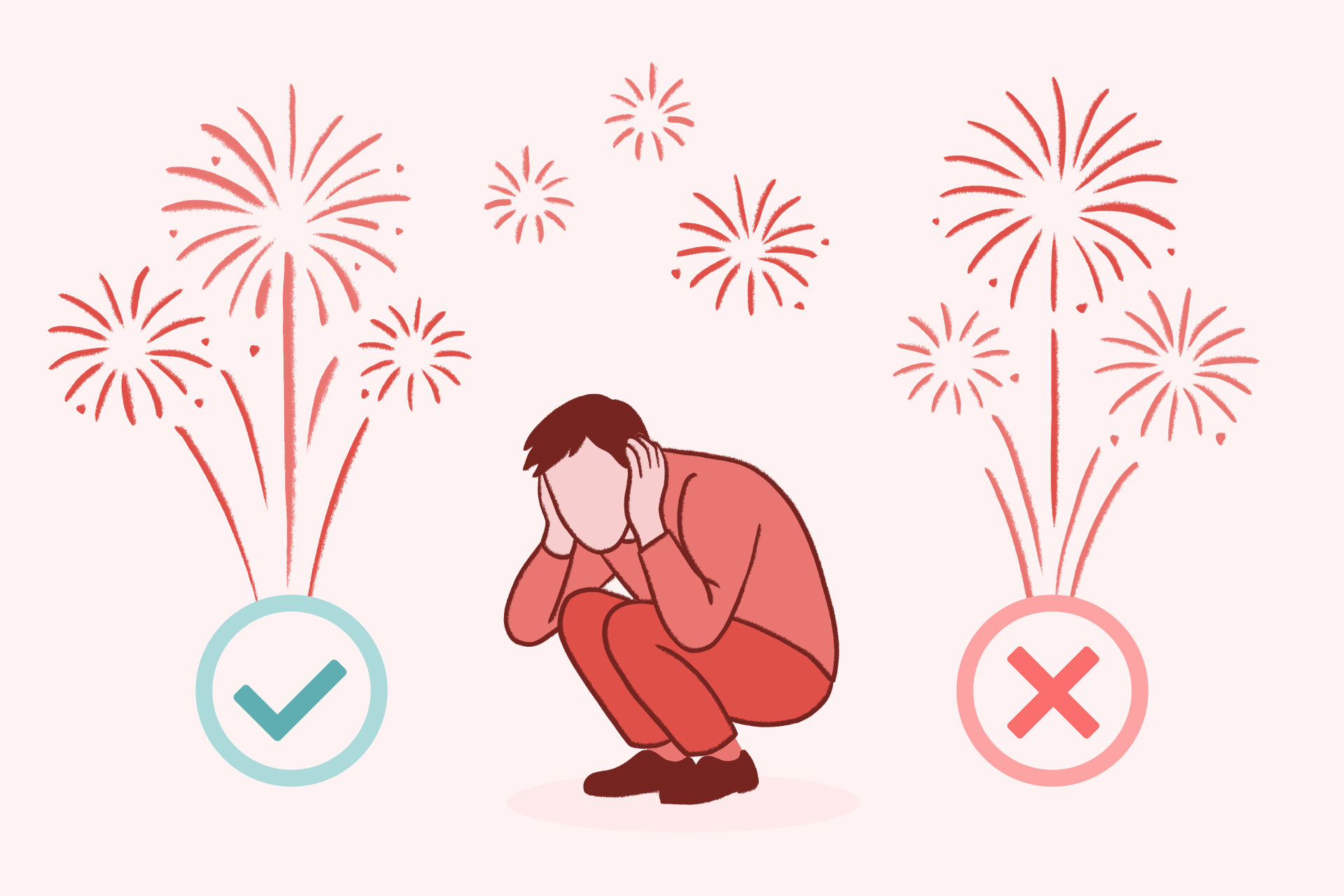PTSD Test: 10 Questions to Recognize the Signs and Symptoms



Caroline Beidler, MSW is an author, speaker, and the Managing Editor of Recovery.com. She writes about topics related to addiction, mental health, and trauma recovery, informed by her personal experience and professional expertise.




Caroline Beidler, MSW is an author, speaker, and the Managing Editor of Recovery.com. She writes about topics related to addiction, mental health, and trauma recovery, informed by her personal experience and professional expertise.
After a traumatic event, many people struggle with distressing memories, nightmares, or heightened anxiety. But how can you tell if it’s something more like post-traumatic stress disorder (PTSD)?
A PTSD test is a self-assessment tool that helps you reflect on your emotional and psychological responses in the past month. While it’s not a clinical diagnosis, it can offer meaningful insight into whether you’re experiencing symptoms of PTSD and whether seeking professional help may be the next step.
Disclaimer: This tool is not a medical diagnosis. It is designed to help you reflect on symptoms of PTSD and your mental health. If your responses raise concerns, speak with a qualified healthcare provider or mental health professional for an accurate diagnosis and treatment options.
Why Take a PTSD Screening?
Not everyone responds to trauma in the same way. Some people recover naturally over time. Others find that the effects of a traumatic experience linger, intensify, or disrupt daily life.
This PTSD screening can help you:
- Reflect on your emotional state and behavior since the traumatic event
- Recognize signs like hypervigilance, flashbacks, or angry outbursts
- Understand whether you’re experiencing symptoms aligned with DSM-5 criteria
- Consider reaching out for a formal PTSD diagnosis and support
Whether your trauma was related to sexual assault, serious injury, natural disaster, or war, this tool offers a chance to pause, reflect, and seek clarity.
Symptoms of PTSD: What to Look For
PTSD is a type of anxiety disorder that can develop after experiencing or witnessing a traumatic event. According to the Diagnostic and Statistical Manual of Mental Disorders (DSM-5), the condition involves four key symptom clusters.
1. Re-Experiencing the Trauma
- Flashbacks or intrusive memories
- Nightmares related to the event
- Emotional or physical distress when triggered
2. Avoidance
- Avoiding thoughts, feelings, or conversations about the trauma
- Steering clear of places or people that serve as reminders
3. Negative Changes in Mood and Thinking
- Persistent negative thoughts or beliefs about oneself or the world
- Feelings of shame, guilt, or detachment
- Loss of interest in activities
4. Hyperarousal and Reactivity
- Being easily startled or always “on edge” (hypervigilance)
- Trouble sleeping or difficulty concentrating
- Angry outbursts or irritability
These symptoms can vary in intensity and often coexist with other mental health conditions, such as depression, self-harm, or substance use. If they persist for more than a month and interfere with daily life, it may be time to speak to a mental health professional.
What If You Score High on the PTSD Test?
A high score doesn’t mean something is wrong with you. It means your mind and body may still be reacting to past trauma, and that reaction deserves care.
If your results suggest PTSD symptoms:
- Reach out to a healthcare professional: A primary care doctor or licensed therapist can offer further screening and guide you toward the right diagnosis.
- Learn about PTSD treatment: Evidence-based therapies like CBT, EMDR, and talk therapy can help process trauma and regulate symptoms.
- Join support groups: Speaking with others who’ve experienced trauma—especially in groups tailored to veterans, survivors, or caregivers—can reduce isolation.
- Create a treatment plan: With help from a clinician, you can find the right balance of therapy, lifestyle changes, and, when necessary, medication.
Remember: PTSD is a mental health injury, not a personal failing.
PTSD or Complex PTSD?
You may also hear the term complex PTSD (C-PTSD). While traditional PTSD is linked to a single traumatic event, complex PTSD stems from repeated or prolonged trauma—especially during childhood or within abusive relationships.
C-PTSD symptoms may include:
- Difficulty managing interpersonal relationships
- Deep feelings of worthlessness or guilt
- Emotional flashbacks not tied to specific memories
While C-PTSD is not formally listed in the DSM-5, many mental health professionals recognize it and tailor care accordingly. The key is finding a provider familiar with both PTSD and complex trauma.
What the PTSD Test Can—and Can’t—Tell You
A self-assessment is a powerful tool, but it’s only one piece of the puzzle.
It can:
- Help you reflect on emotional symptoms and trauma triggers
- Point to signs of PTSD or related mental health conditions
- Motivate you to seek professional psychiatry or therapy
It can’t:
- Diagnose you with PTSD
- Replace the expertise of a healthcare professional
- Consider your full history, cultural background, or support system
That’s why the next best step is reaching out to someone qualified in trauma-informed care.
Who Should Take a PTSD Test?
This PTSD screening may be useful if you:
- Experienced a traumatic event, such as combat, abuse, or sexual assault
- Struggle with distressing memories or emotional numbness
- Avoid certain people, places, or situations
- Have been told you seem angry, distant, or anxious
- Are concerned about a loved one or family member who may be showing symptoms
Even if your trauma occurred years ago, healing is still possible—and it’s never too late to get help.
Evidence-Based PTSD Treatment Options
There are several effective treatments that help people process trauma, reduce symptoms, and reclaim a sense of control.
Common PTSD Treatments Include:
- Cognitive Behavioral Therapy (CBT): Helps reframe negative thoughts and identify unhelpful patterns.
- Eye Movement Desensitization and Reprocessing (EMDR): Uses guided eye movement to help the brain reprocess trauma.
- Prolonged Exposure Therapy: Supports gradual exposure to trauma-related memories in a safe, structured way.
- Medication: Some individuals benefit from antidepressants or anti-anxiety medications to manage specific symptoms.
The most effective treatment plan is one that’s trauma-informed, collaborative, and tailored to your unique needs.
Trauma may change you, but it doesn’t have to define you. If this PTSD test helped you see patterns in your life, let it be the first step, not the last. Healing is possible. And you’re not alone on the path forward.
Resources and Next Steps
External Resources
FAQs
Q: Is the PTSD test accurate?
A: The PTSD test is a widely used screening tool—often based on the PCL (PTSD Checklist)—to help identify symptoms of PTSD. However, it’s not diagnostic. A full evaluation from a mental health professional is needed for an accurate diagnosis.
Q: Can PTSD develop years after a traumatic event?
A: Yes. Some people experience delayed onset PTSD, especially if stressors later in life trigger memories of the original trauma.
Q: What’s the difference between PTSD and complex PTSD?
A: PTSD typically stems from a single trauma, while complex PTSD arises from chronic, repeated trauma. Treatment approaches may differ, especially for emotional regulation and interpersonal issues.
Q: Can children have PTSD?
A: Absolutely. Children and teens can develop PTSD after serious injury, abuse, loss, or witnessing violence. Symptoms may look different but still require prompt care.
Q: What should I do if a loved one may have PTSD?
A: Approach them gently. Share your observations, encourage them to take a PTSD screening, and support them in seeking professional care. Support groups for family members can also be helpful.
Q: Is PTSD treatable?
A: Yes. With the right combination of therapy, support, and sometimes medication, most people see significant improvements in their symptoms and overall well-being.
Our Promise
How Is Recovery.com Different?
We believe everyone deserves access to accurate, unbiased information about mental health and recovery. That’s why we have a comprehensive set of treatment providers and don't charge for inclusion. Any center that meets our criteria can list for free. We do not and have never accepted fees for referring someone to a particular center. Providers who advertise with us must be verified by our Research Team and we clearly mark their status as advertisers.
Our goal is to help you choose the best path for your recovery. That begins with information you can trust.







